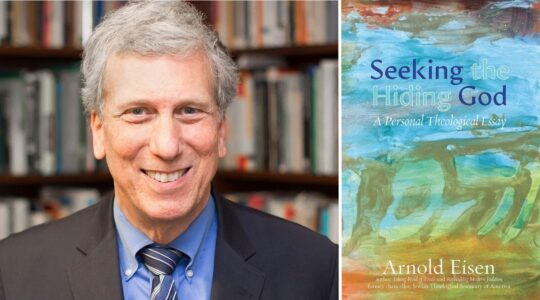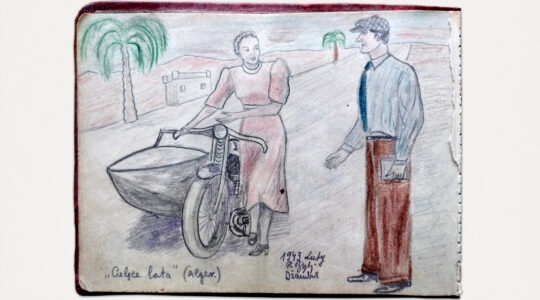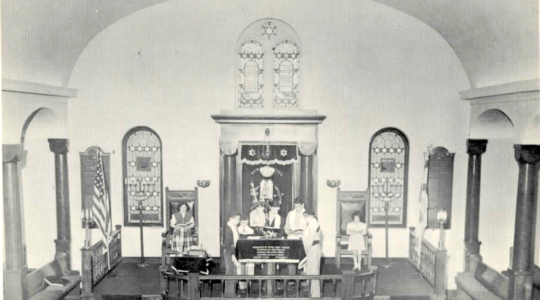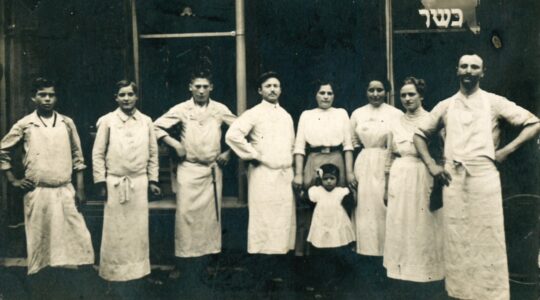At a time when we are keenly aware of the deep divisions within the Jewish community on issues from religious practice to the policies of the State of Israel, we have just marked the festival of Shavuot, the Feast of Weeks, with the most unifying theme in Jewish life: the giving of the Torah, the central, foundational text of our history and people, at Mount Sinai.
Doubly sad, then, that Shavuot is the least celebrated of the three major festivals. Is that because it has no seder to observe like Passover has, nor sukkah to build like on Sukkot? Perhaps, and I suspect that many American Jews could not tell you what Shavuot is all about. Something to do with the harvest in ancient times, a few might venture. Or eating cheese blintzes today…
If not for the notice in The New York Times that alternate side of the street parking was suspended on Sunday and Monday, in honor of the observance of Shavuot, even fewer of us would have known about the holiday.
But Shavuot gives us the story of one of the most admired characters in our literature, Ruth, the gentle young Moabite widow who rejects her past and casts her fate — and shapes ours — by embracing Judaism.
A close look at the story of the most famous convert in Jewish history offers up a timely message about how we can approach the dangerous fissures in Jewish life in a way that can help us heal, and bring us closer together. In so doing, it presents a stinging challenge to the disturbingly narrow interpretation of conversion laws in Israel today and the negative impact they are having throughout the diaspora.
This past Tuesday in synagogues around the world the Book of Ruth was read, with its simple but stirring statement from Ruth to her mother-in-law, Naomi, who urged her to return to her own people rather than accompany her to Bethlehem. It makes for one of the most sublime declarations in history:
“Do not urge me to leave you, to turn back and not follow you,” Ruth says. “For wherever you go, I will go; wherever you lodge, I will lodge; your people shall be my people, and your God my God. Where you die, I will die, and there I will be buried. Thus and more may the Lord do to me if anything but death parts me from you.”
Ruth’s extraordinary act, showing not only love for Naomi but also a willingness to accept the One God, makes her part of the Jewish people. And at the end of the story she gives birth to a son, who in turn becomes the father of Jesse, the father of David, king of Israel. According to tradition, from that progeny the Messiah will be born.
The message our rabbis give us is a profoundly bold one of acceptance. After all, Ruth is from a tribe that is an enemy of the Jewish people on a deeper level than even the descendants of Esau, the Edomites, or the Egyptians, who cruelly enslaved us for centuries. In Deuteronomy, God says, “You shall not abhor an Edomite, for he is your kinsman. You shall not abhor an Egyptian, for you were a stranger in his land.” But the descendants of Moab, until the 10th generation, should not be accepted into “the congregation of the Lord because they did not meet you with food and water on your journey after you left Egypt” and because they hired Balaam “to curse you.”
Yet Ruth’s straightforward declaration to Naomi not only brings her acceptance among the Jewish people, but also makes possible her pivotal role in determining the kings of Israel and, ultimately, the Messiah.
The rabbis of old no doubt struggled with the text of the Book of Ruth. How could a member of a cursed tribe be the heroine of the story of the grandmother of King David? A legal loophole of sorts is found, interpreting the prohibition of marrying a Moabite as applying to Jewish women, thus allowing a man to marry a woman from Moab.
Support the New York Jewish Week
Our nonprofit newsroom depends on readers like you. Make a donation now to support independent Jewish journalism in New York.
I can’t help but think, though, that if Ruth lived under the current Chief Rabbinate of Israel, with its increasingly rigid and restrictive interpretation of the laws of conversion, she would not be accepted as a daughter of Israel, and the trajectory of Jewish history would be altogether different.
Of course it is a great responsibility to define who is and who isn’t Jewish, especially in our age of modern pluralism. The laws are complex, and the stakes are high. But what is most troubling about the views coming out of Jerusalem in recent years is that they are motivated by an effort to keep the gates closed, to prevent seekers from joining our people rather than to welcome them.
Potential converts are told they must accept each of the hundreds of mitzvot in Jewish life when a more liberal approach would enable tens of thousands of Russians in Israel to join the Jewish people, potentially transforming the society in positive ways. Further, a number of recent conversions have been revoked by the Chief Rabbinate. The chilling effect of such actions, and their negative message, has caused ripples of frustration and anger here and across the Jewish world.
This is a time when we need the spirit of Hillel, who accepted the man who wanted to learn about Judaism while standing on one foot. Instead we have the response of Shammai, who shooed him away.
On Shavuot, we marked the day that, according to tradition, all Jews — past, present and future — gathered at Sinai and accepted the Torah, creating the greatest moment of Jewish unity in history. I chose to read the story of Ruth in that spirit, reminded that our impulse should be to find ways to embrace rather than reject those who are sincere in their intentions to echo Ruth’s words: “Your God shall be my God.”
The above is a slightly revised version of a Between The Lines column that was published in 2012.
The New York Jewish Week brings you the stories behind the headlines, keeping you connected to Jewish life in New York. Help sustain the reporting you trust by donating today.





